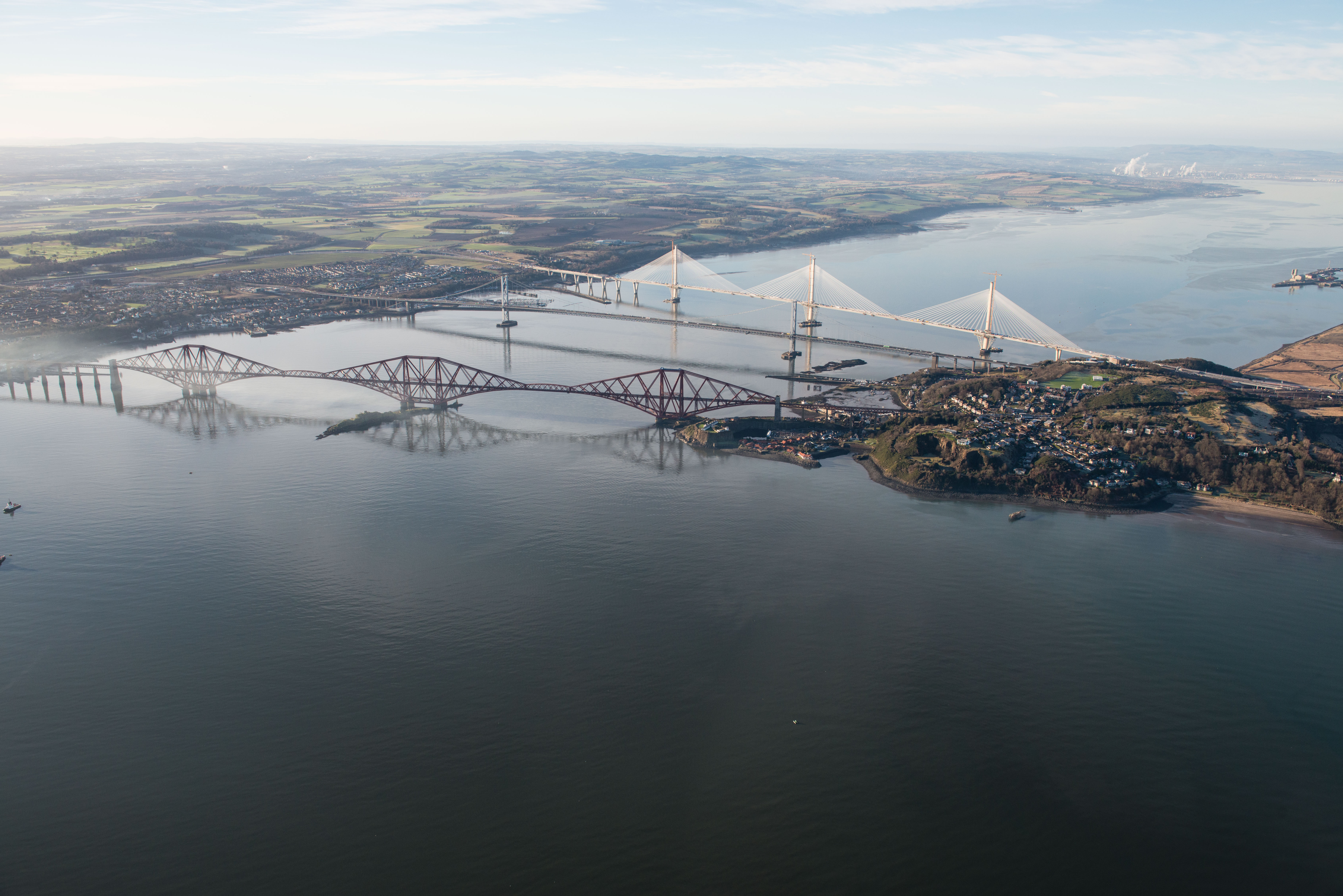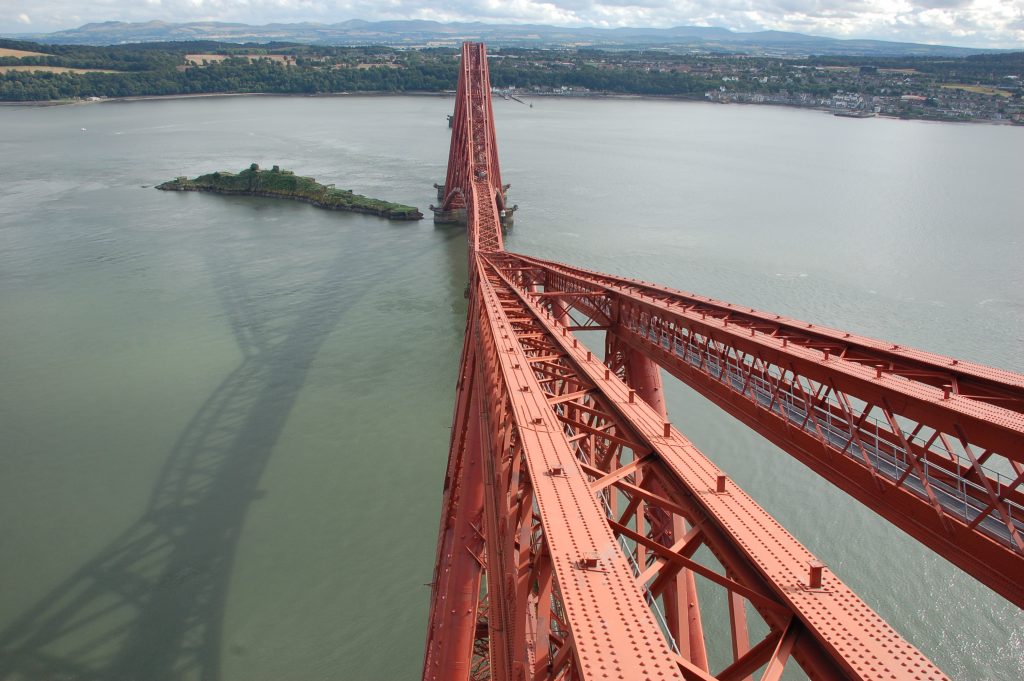The Forth Bridge is an iconic symbol of Scotland’s place in the industrial world. Built between 1882 and 1890, it is the world’s second longest cantilever bridge, spanning a length of 8,094 feet. It is also a UNESCO World Heritage Site, inscribed in 2015 because of its unique industrial aesthetic, and the outstanding milestone it marks in the development of bridge design.
The bridge provides a rail link between North Queensferry and South Queensferry, which lie either side of the River Forth. These towns are commonly believed to have got their names from Saint Margaret of Scotland. In around 1068 she established a regular ferry crossing between the North and South banks of the Forth to aid those making a pilgrimage to St Andrew’s Shrine.
Nowadays, the Forth Bridge is one of three bridges in the area (although it is the only rail bridge). Collectively, they make up an internationally famous landscape.

Before the bridge we see today was built, the foundations of a completely different bridge were laid in 1878. Sir Thomas Bouch had designed a suspension bridge for the crossing, but in 1879 another bridge that Bouch had designed collapsed during the tragic Tay Bridge Disaster. During a storm, the Tay Bridge had collapsed under the weight of a train carrying 75 passengers, killing everyone on board. Following the disaster, Bouch’s design for the Forth Bridge was quickly abandoned. Today you can still see the foundations for his bridge on Inchgarvie, an uninhabited military island in the Forth.
After Bouch’s public fall from grace, English engineers Sir John Fowler and Benjamin Baker were invited to propose the design for the Forth Bridge we see today. This time a cantilever bridge was proposed (a bridge that uses horizontal sections supported on only one end), built to withstand high wind pressures and violent storms.
The first weight testing of the new Forth Bridge began on the 21st of January 1890, and was naturally a very cautious process:
It had been decided, for the purpose of the experiment, to take a double train of waggons over the bridge, for this purpose the vehicles, with three engines, were brought to the north end of the structure. The whole weight 2000 tones, the engines themselves weighing 75 tonnes each. The trains were allowed to stand side by side on the southern approach viaducts, a short distance from the first granite archway. At a later hour the trains moved very slowly until the leading engine was half way out over the arch. Another wait took place, and then the trains again went forward and passed through the ironwork of the first cantilever. During the proceedings, none but the engineers were allowed on the bridge, and observations as to the effect of the weight on the structure were taken at various points. About one o’clock the trains passed onto the Inchgarvie cantilever.
The Edinburgh Evening News, Tuesday, January 21, 1890
The bridge finally opened on the 4th March 1890, becoming the world’s longest cantilever bridge.
As part of the Forth Bridges Forum we’re involved in the continued conservation and management of the bridge as a World Heritage site, but since its construction the bridge has remained remarkably strong. Its bearings (the surface between the bridge’s piers and its deck) are all still original, and a report looking into the bridge’s condition concluded that only a small percentage of its total endurance had been used up.
This means that not only does the Forth Bridge continue to serve the same purpose it was built to do 127 years ago, but that its historic, iconic design is still working for an expanding, modern economy.
Happy birthday, Forth Bridge!


